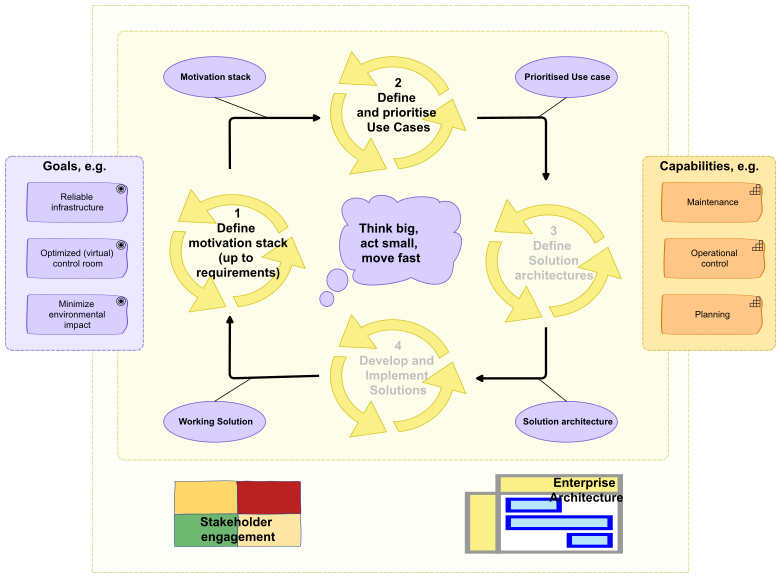Approach
Digital Twins can bring disruptive features to your organisation, your customers and other parties in your ecosystem. That’s why stakeholder engagement is key when implementing digital twins.
Most stakeholders aren’t digital natives and aren’t aware of digital twins’ potential. This is why managing the necessary transition when adopting Digital Twins is so important. A structured approach is needed that allows for pro-active stakeholder engagement, making them aware of the possibilities and involving them in digital twin activities. Our method supports this approach, helping organisations execute and monitor digital twin activities, ensuring quality digital twin solutions and tracking the long term benefits.
Step 1: Outcomes and capabilities
Understand current and desired organisational capabilities and business outcomes as drivers for change. Assess stakeholder challenges and translate these to business goals.
Step 2: Stakeholder engagement
Stakeholders often aren’t aware of digital twin possibilities. That’s why it’s important to demonstrate technology with use case ideas and examples and to discuss whether digital twins could be beneficial to achieving business goals.
Step 3: Digital twin solution realisation
Realising a digital twin solution can be achieved by using or building new, existing, and adapted digital twin components. As many components as possible should be reused to improve return on investment. In this phase, the solution is explored, designed, built, tested, deployed, and commissioned.
Step 4: Measure the added value of a digital twin to achieve positive outcomes
The digital twin staircase shows increasing complexity and investment (descriptive, diagnostic, predictive, prescriptive, and transformative). Therefore, it’s important to measure return on investment, preferably also for each prior investment, to justify any future investments.
